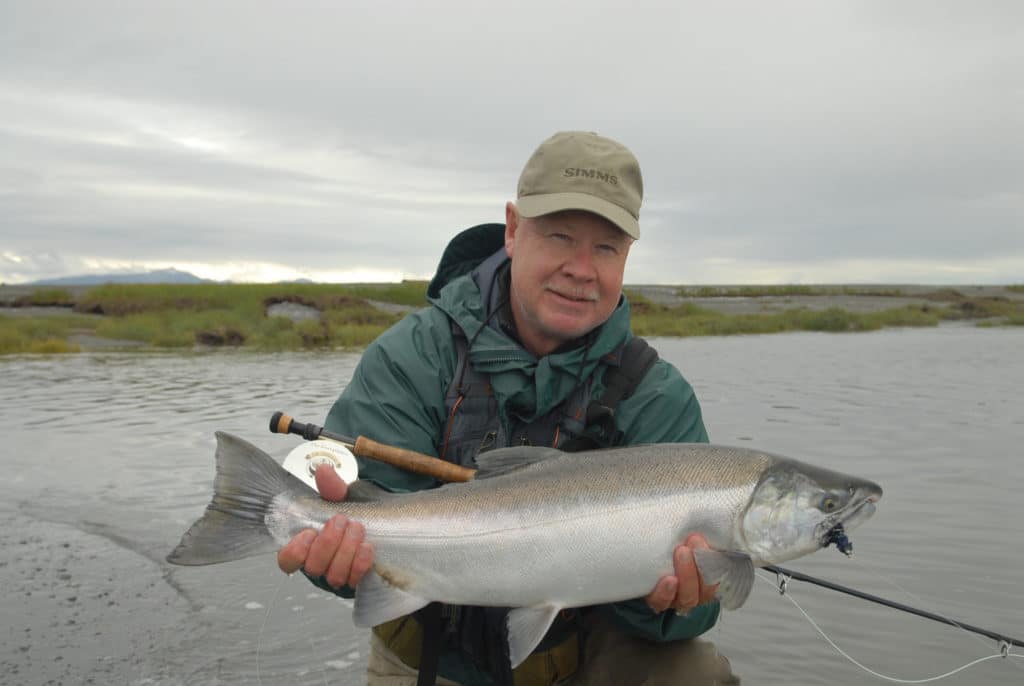
Pacific salmon are amazing game fish. From the smaller pinks to the massive kings, which can weigh over 70 pounds, all are hard fighters on the appropriate tackle. But for many anglers, myself included, cohos (also know as silver salmon) are the middle-weight champs of the group, renowned for their strength, quickness, and agility.
Typically caught in the 8- to 12-pound range, silver salmon attain an even more impressive stature in some areas of Alaska, with specimens in the mid-teens to over 20-pounds hitting the scales.
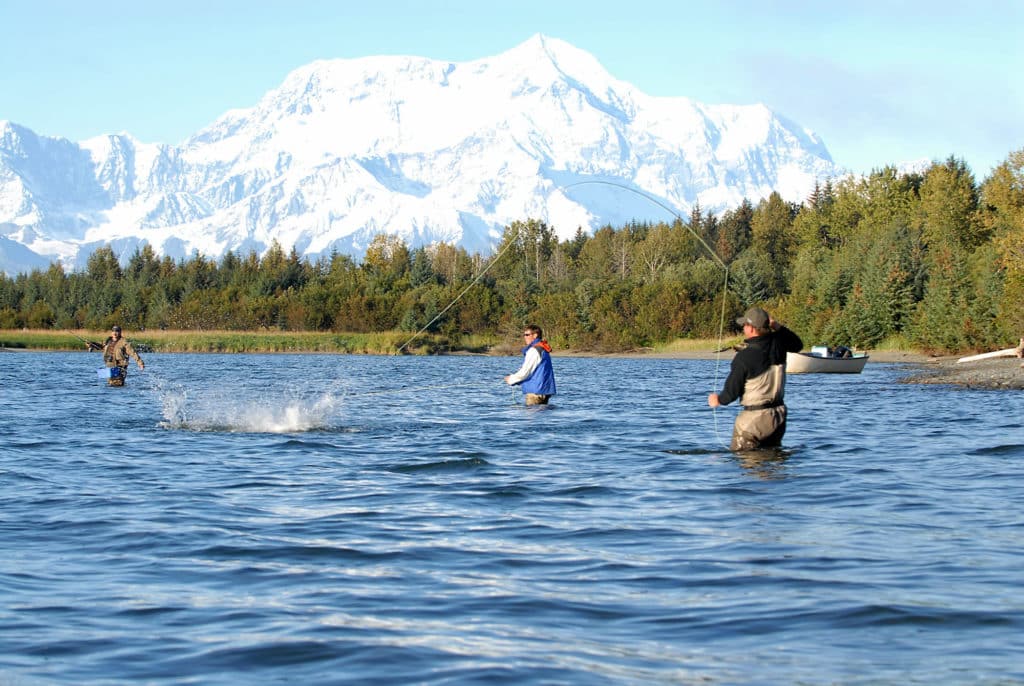
Silvers can gently take a fly on the surface, or smash a gaudy streamer below it with a ferocity that sends a shock wave up your arm. The instant you set the hook, mayhem ensues, and the battle is bound to combine long runs, gleaming leaps, furious head shakes, and the sudden changes of direction that would make an NFL running back envious.
To experience the fight of silver salmon at their best, you want to challenge the fish while they are still in salt water, or shortly after they’ve entered a river and are still within the tide-influenced section, near the mouth. Fish fresh from the ocean, commonly called chromers, are silver bright and full of life. But once they enter freshwater, silvers stop eating (though they’ll still strike a fly out of reflex) and, as they proceed up the river en route to their spawning grounds, their strength wanes, their silvery glow dulls, and they — like all Pacific salmon species — undergo a remarkable transformation that changes their appearance enough to make you question whether they are the same species.
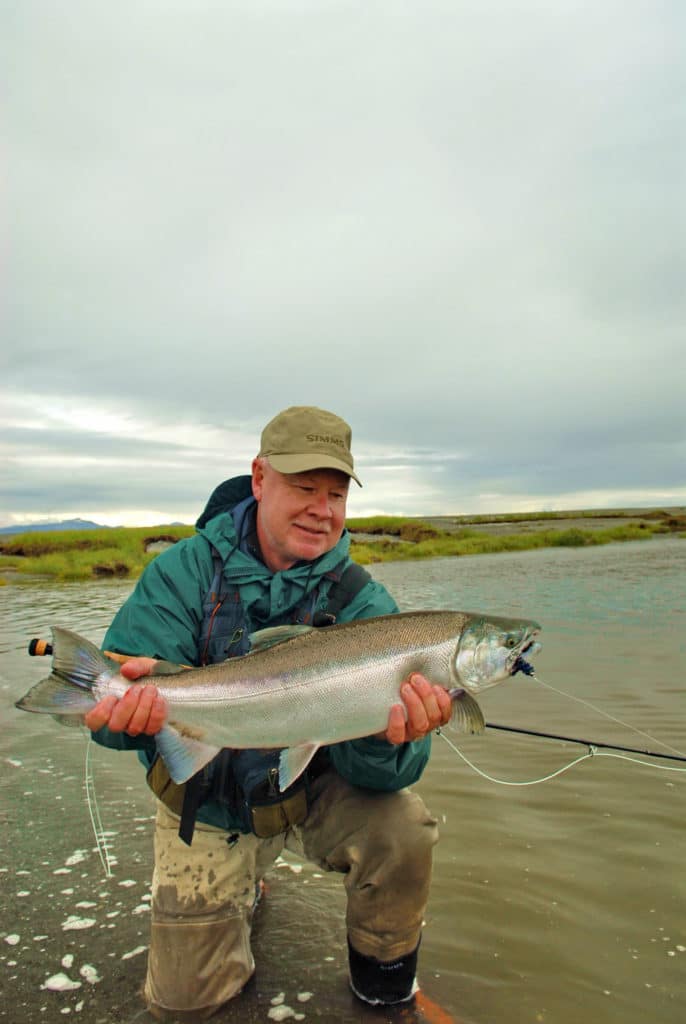
I’ve fished for chromer cohos in places where they reach their largest size. The most memorable was Icy Bay Lodge, located at the foot of Mount Saint Elias (the second tallest mountain in North America), in southeastern Alaska. As the salmon enter the bay, you can walk on firm gravel flats and sight cast to fish pushing V-shaped wakes on the surface. Those are among the biggest silvers found anywhere and, along with the usual acrobatic displays, they’re capable of runs a bonefish would envy.
Cordova, Alaska, where Orca Adventure Lodge is situated, is another great location for silvers fresh from the ocean. From their base, you can fish numerous streams flowing into Prince William Sound or the Copper River basin.
The last Pacific salmon species to spawn throughout most of their range, silvers begin to make their way into major river systems in mid to late summer, continuing into autumn, although exact timing for the best fishing varies with the river system.
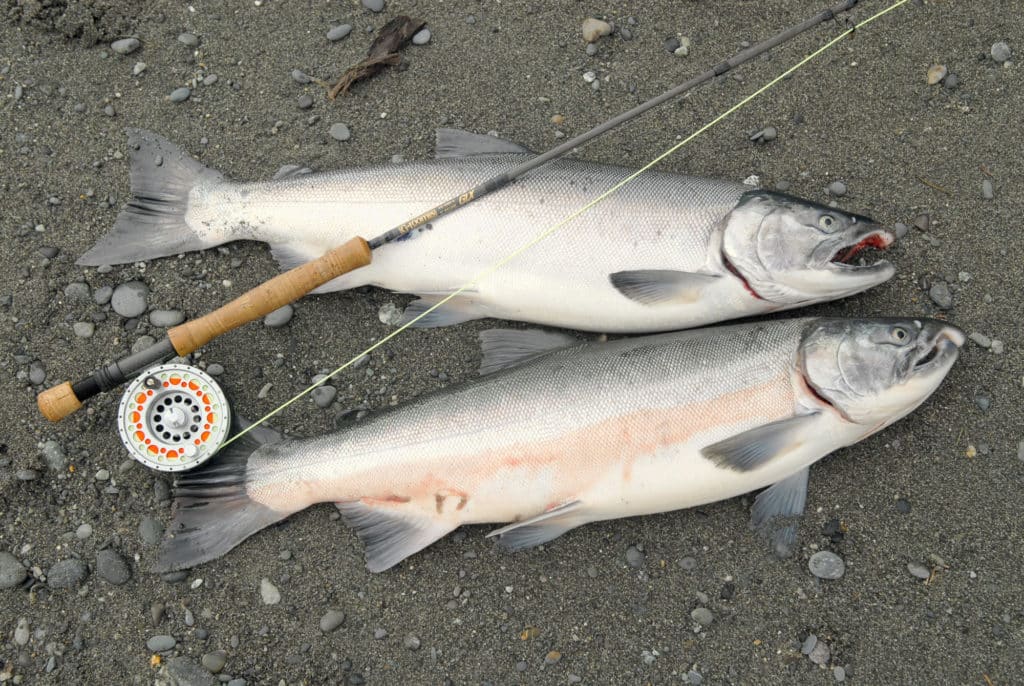
An 8-weight fly rod fitted with a reel that holds 200-yards of backing and has a smooth drag is the weapon of choice for these fish. A floating, weight-forward lines are ideal for surface presentations, most effective when fish are in shallow, calm water. The same fly lines also work for some subsurface flies, which often prove most productive. Sink-tip lines or sinking shooting heads are best for targeting fish in a fast current or in deep holes, where salmon tend to gather and rest before pushing upstream.
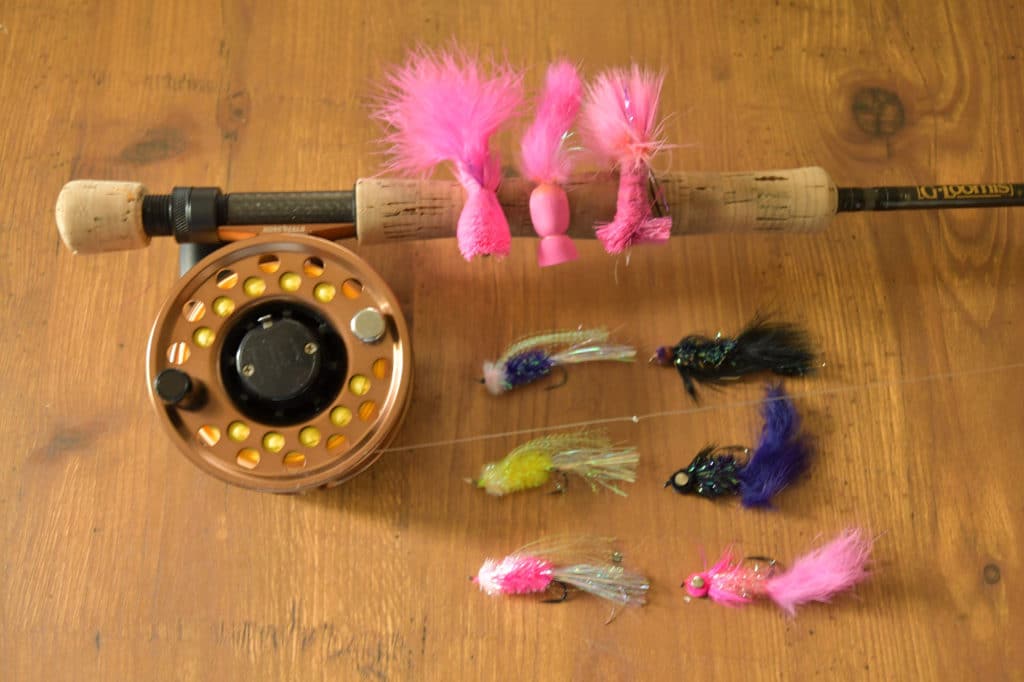
Leaders with a 12-pound tippet are a good rule of thumb, but feel free to go lighter or heavier based on your skill level and the abundance of submerged obstructions in the area. Most of the flies used for coho are gaudy patterns — combining flash and bright, colors — designed to be detected even in murky water, and trigger aggressive reaction strikes. Hot pink, chartreuse and orange are often mixed with purple or black for contrast, and materials like marabou, Zonker (rabbit) strips, and Flashabou provide enticing action. Proven subsurface patterns include Davis Spankers, Egg Sucking Leech and Starlight Leech variations, and Clouser Minnows. Popular topwater flies include hot pink Pollywogs, Hammerheads, and Hotlips Express salmon poppers.
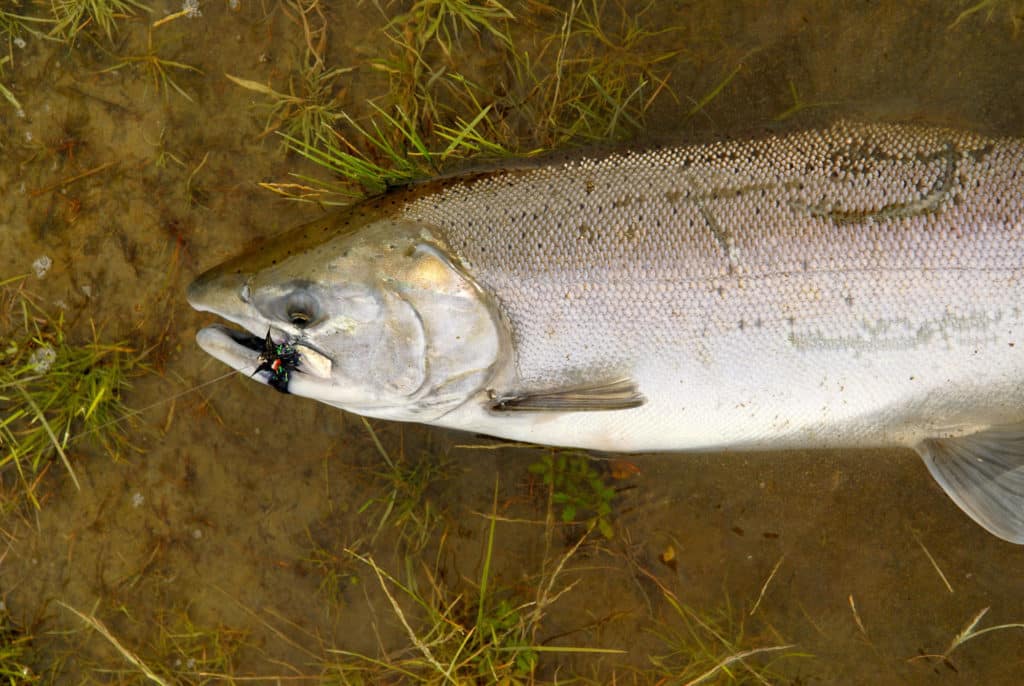
Long strips and strip-strikes will greatly increase your hookup ratio. On a trip to Cordova, I fished alongside three avid freshwater trout fishermen on their first trip for silvers. Their delicate casts and hook-sets were not very successful. I had great results holding my rod away from my body, with the tip pointed directly at the fly as I stripped the fly. Whenever a fish hit, I forcefully pulled straight back on the line to set the hook, just like I would do for striped bass or redfish.
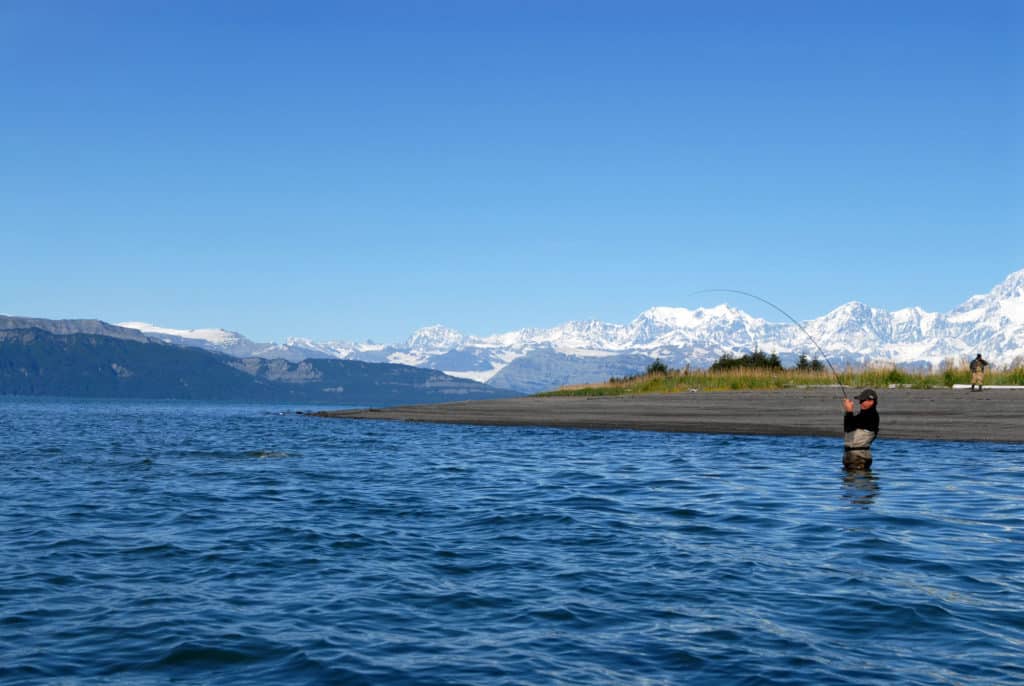
If you have not considered fly-rodding for silvers in saltwater, I strongly suggest you add it to your bucket list. Action-packed fishing that takes place among some of the most beautiful scenery makes for an unforgettable adventure you’ll want to relive year after year.









